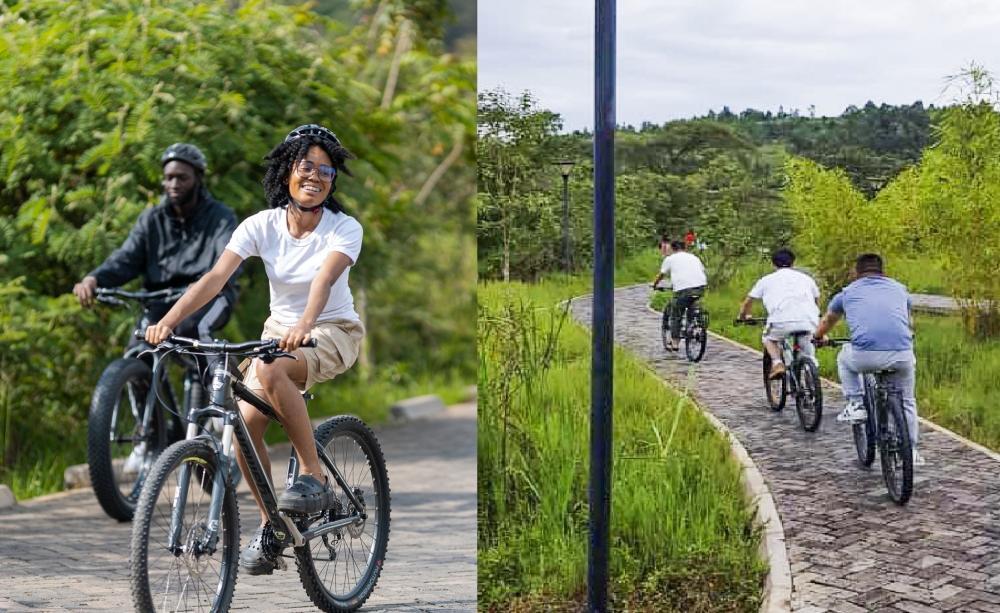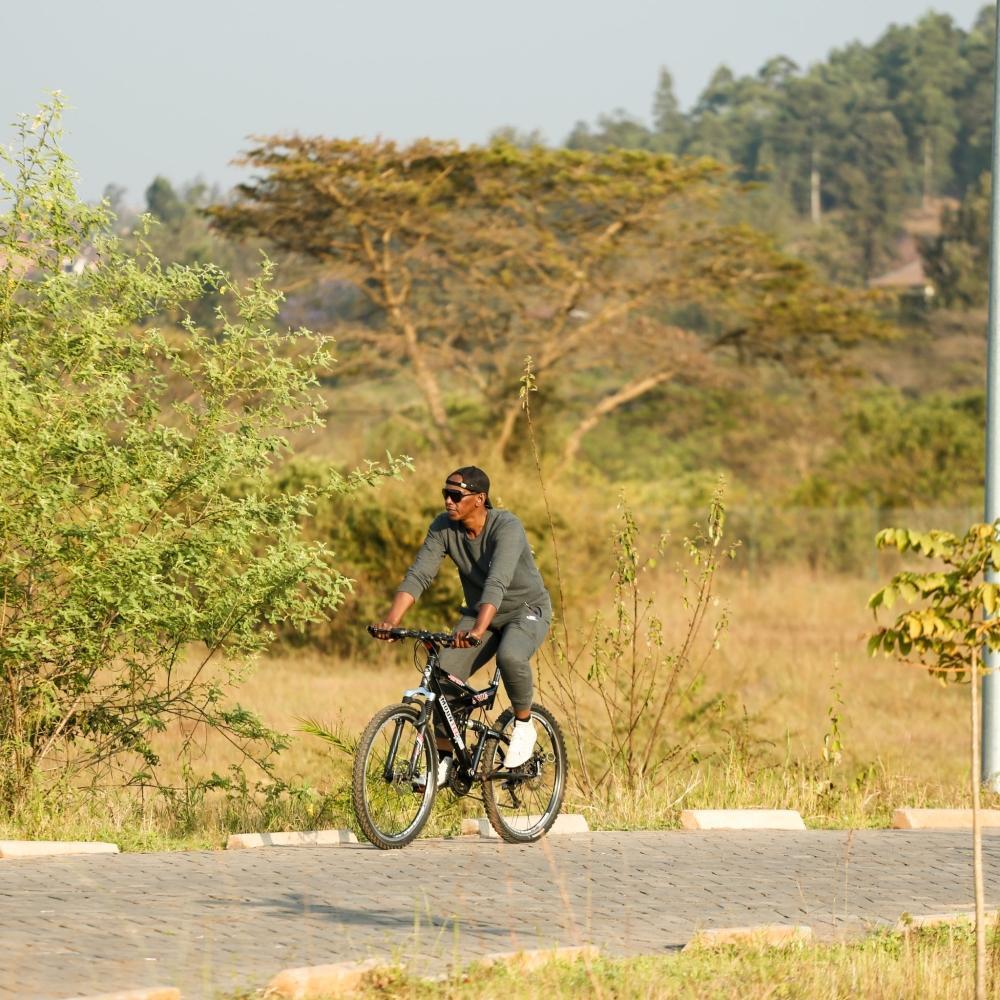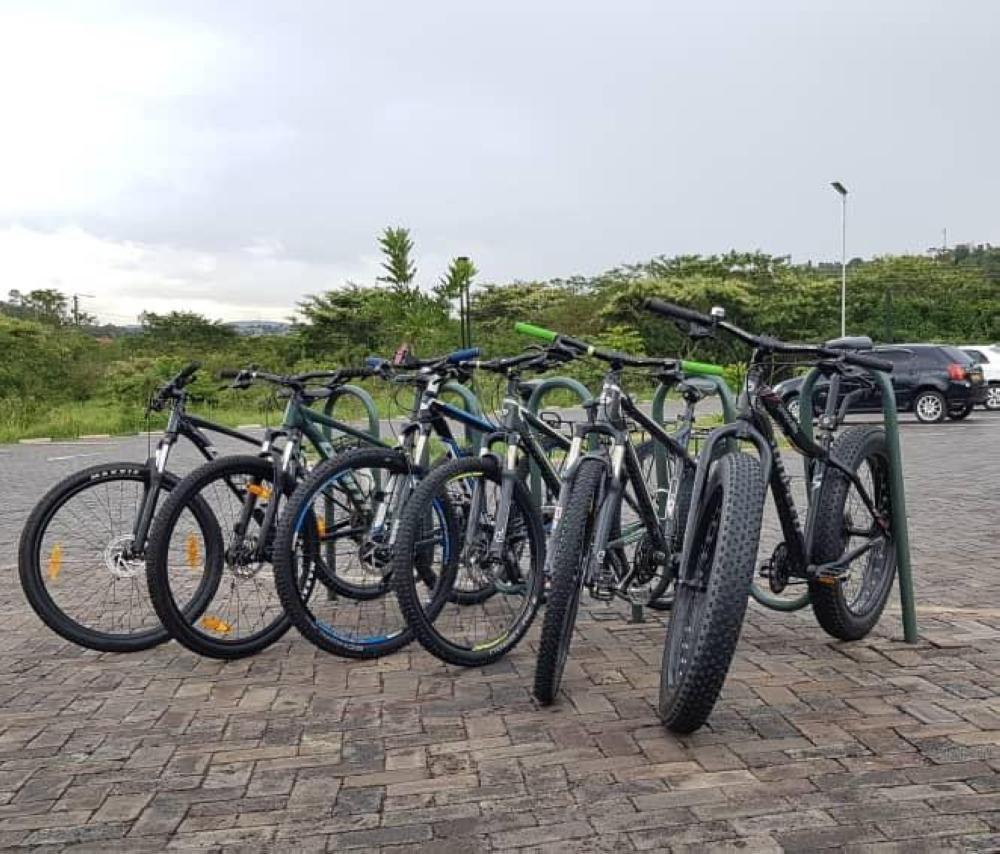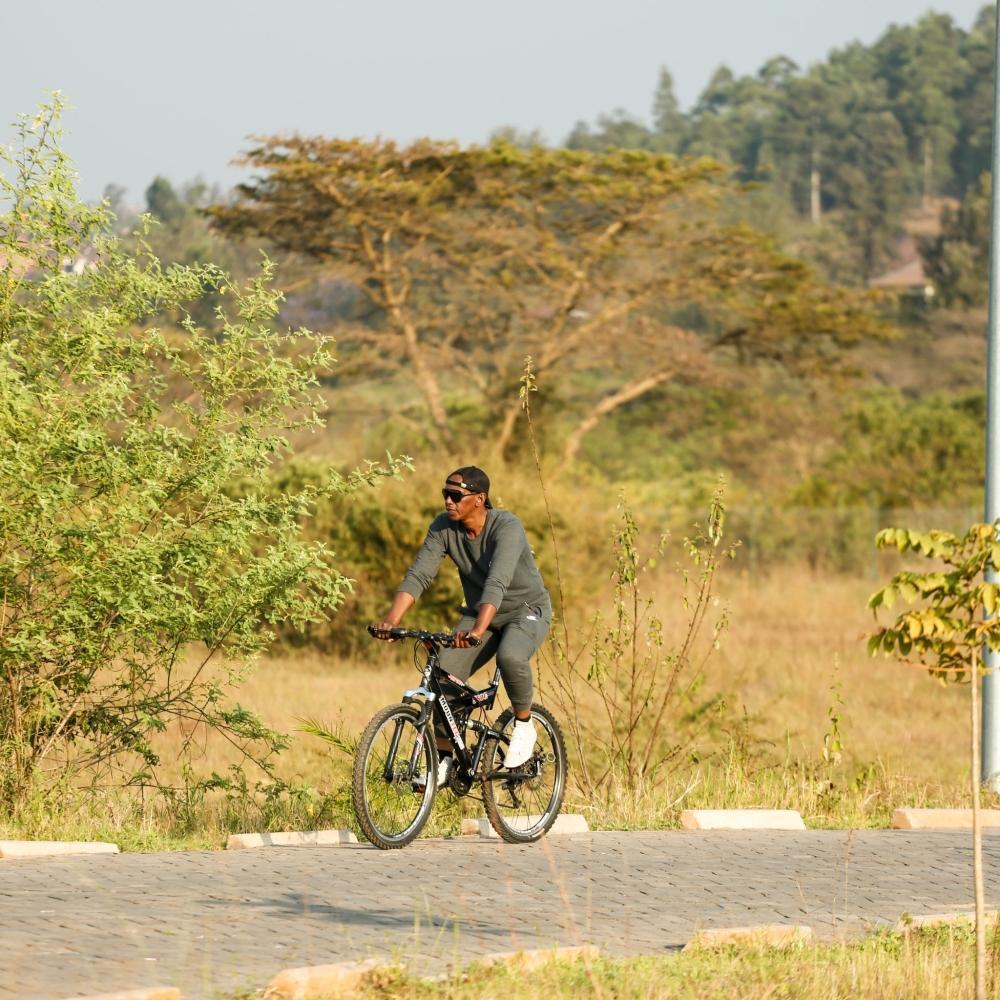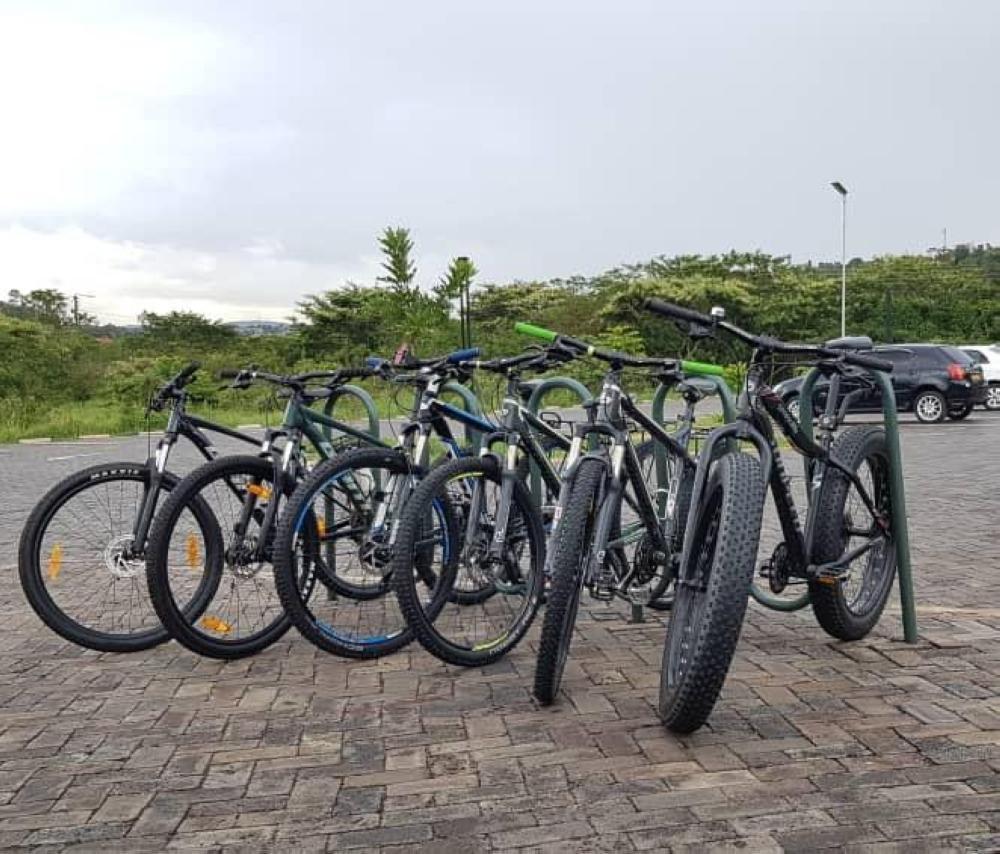Africa-Press – Rwanda. The City of Kigali is set to create more cycling-friendly spaces as part of efforts to promote sustainable mobility and improve residents’ quality of life, officials have said.
Cycling areas are sections of urban space designed to be safely and comfortably used by people on bicycles often integrated into wider public space projects such as parks, walkways, and pedestrian-friendly streets.
According to City of Kigali spokesperson Emma-Claudine Ntirenganya, cycling will be among the features of a new public space being developed at the intersection of Kigali Convention Centre (KCC), Kigali Heights (KH), and Kigali Alliance Business Centre (KABC).
“It’s a public space where different events will be held. Cycling can also be part of it,” she said.
The area, formerly known as the KBC roundabout was demolished ahead of the UCI Road World Championships to create a fan zone and ceremonial grounds.
Cycling paths in restored wetlands
The City of Kigali, in collaboration with the Rwanda Environment Management Authority (REMA), is also incorporating cycling lanes into ongoing wetland restoration projects.
A visitor during a tour of the revamped Nyandungu Wetland Eco-Park in Kigali.
According to REMA, Kigali’s wetlands restoration is 67% complete, while walk and cycle paths are 54.1% complete, boosting sustainable transport options across the city.
Five major wetlands under restoration will feature more than 60 kilometres of cycling and pedestrian trails:
Gikondo Wetland – 16.9 km
Rugenge-Rwintare – 15.5 km
Rwampara – 10 km
Kibumba – 9.8 km
Nyabugogo – 9.3 km
In addition, Nyandungu Ecotourism Park plans to expand its cycling and walking trails from 10 km to 15 km.
Bicycles that are used by visitors at Nyandungu Eco-Park
Making cycling practical
Urban mobility expert Julien Allaire, Director of International Operations at Transitec Consulting Engineers, said the cycling paths being developed by REMA should be open for daily commuting, not just recreation.
“If they are open to daily cycling, it could be a game changer for bicycle use even if, unfortunately, they are not wide enough,” he said, urging that cycling lanes be connected to the main road network.
Allaire noted that cycling is increasingly encouraged in cities seeking to reduce traffic congestion and air pollution.
“Following the examples of Amsterdam and Copenhagen, cities like London and Paris are expanding bicycle use to improve accessibility, cut public costs, and enhance health through regular activity,” he said.
To make cycling viable, he stressed the need for: Safe, high-quality cycling infrastructure separated from traffic; Optimal routes through valleys or gentle slopes to ease uphill rides; Connectivity to the Central Business District and other hubs; Signage and secure parking for bicycles; and Public campaigns promoting cycling as a serious mode of transport.
He also encouraged the adoption of electric bicycles, citing a recent study showing that two-thirds of University of Rwanda students who tested e-bikes were willing to use them regularly.
Residents’ perspective
Some residents say the few existing cycling lanes have made local transport easier but want more routes built.
Alphonse Munyemana, a resident of Nyagatovu Cell, said: “It’s easy to transport goods from Kimironko Market using the road with bicycle lanes, but not towards Zindiro or other areas. We wish more roads had dedicated lanes.”
The Institute for Transportation and Development Policy (ITDP) estimates that more than 1,500 cyclists use Kigali’s busiest roads, particularly routes leading to Nyabugogo, between 7 a.m. and 8 a.m.
Many commuters are now opting for bicycles over buses due to long wait times and over moto taxis, which are costlier and less safe.
“I usually cycle around the city, but it still feels unsafe because many roads lack bicycle lanes,” said Paul Mwesigwa, a Kigali resident.
Policy support for cycling
Rwanda’s National Transport Policy (2021) promotes non-motorised transport (NMT), including walking, cycling, tricycles, and pushcarts.
It calls for: More equitable road space for cyclists and pedestrians; Universally accessible walking and cycling facilities; Reduced bicycle import tariffs to make them affordable; and The introduction of bike-share systems for short trips and “last-mile” connections.
While a bike-sharing initiative was launched in 2021, it was later suspended due to operational challenges.
Still, city officials and mobility experts believe that with continuous investment in cycling lanes, public awareness, and safety measures, Kigali could soon become one of Africa’s leading cycling-friendly cities.
A visitor during a tour of the revamped Nyandungu Wetland Eco-Park in Kigali.
Bicycles that are used by visitors at Nyandungu Eco-Park
For More News And Analysis About Rwanda Follow Africa-Press

